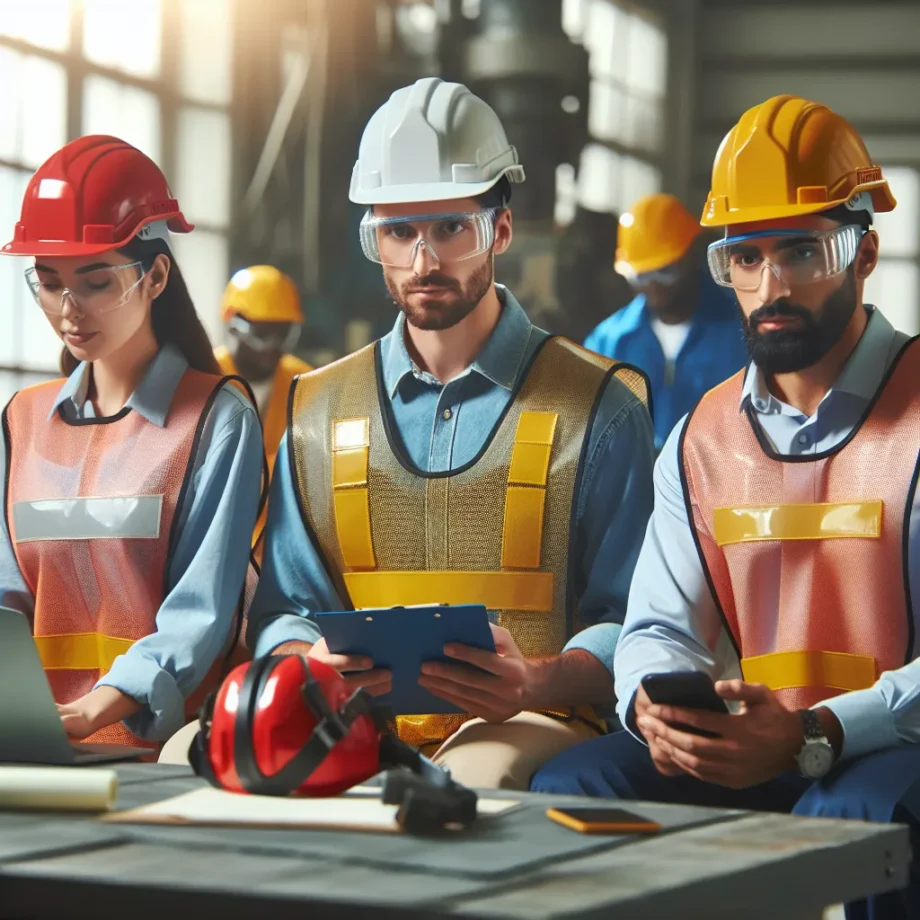The Vital Role of Safety Gear in Industrial Work
When it comes to industrial work, the importance of safety gear cannot be overstated. In high-risk environments such as manufacturing plants, construction sites, and chemical facilities, the use of proper safety gear plays a vital role in ensuring the well-being of workers. Safety gear, including helmets, goggles, gloves, and protective clothing, is specifically designed to provide a barrier against potential hazards and minimize the risk of injuries.
One of the key aspects of safety gear is its ability to protect workers from various workplace hazards. For instance, hard hats are essential in safeguarding workers from head injuries caused by falling objects or low-hanging structures. Similarly, safety goggles protect the eyes from debris, chemicals, and harmful light, while gloves provide a shield against cuts, burns, and chemical exposure. Additionally, specialized clothing such as flame-resistant suits are crucial in environments where fire hazards are prevalent.
Moreover, the use of safety gear not only mitigates the risk of physical harm but also enhances overall work efficiency. When workers feel safe and secure in their environment, they can focus on their tasks without constant worry about potential dangers. This leads to improved productivity and quality of work. Furthermore, the implementation of safety protocols and the use of safety gear create a culture of responsibility and risk awareness among the workforce.
In conclusion, safety gear plays a pivotal role in industrial work by protecting workers from hazards, enhancing productivity, and fostering a safety-oriented culture. Employers should prioritize providing appropriate safety gear and ensure that employees are trained in its correct usage to create a secure work environment.
Protective Equipment: A Non-Negotiable in High-Risk Fields
Protective equipment is an absolute necessity in high-risk environments where the safety of individuals is paramount. Industries such as construction, manufacturing, and mining present numerous hazards that can result in serious injuries or even fatalities if proper safety gear is not worn. The significance of safety gear cannot be overstated, as it serves as a crucial line of defense against potential dangers in the workplace.
One of the most fundamental aspects of safety gear is the protection it provides against head injuries. Hard hats or helmets are essential in environments where falling objects or low ceilings pose a threat to workers. These protective headgear items are designed to absorb the impact of falling debris and prevent traumatic head injuries. In addition, safety goggles or visors are crucial for safeguarding the eyes from foreign objects, chemicals, and intense light, which are prevalent in industries such as construction, welding, and laboratories.
Another non-negotiable safety item is high-visibility clothing, particularly in environments with moving machinery or vehicles. Wearing reflective vests or clothing significantly reduces the risk of accidents by ensuring that workers are easily visible to equipment operators. Additionally, ear protection such as earmuffs or earplugs is indispensable in environments with loud machinery or equipment, as prolonged exposure to high noise levels can result in permanent hearing damage.
Furthermore, respiratory protective equipment is essential in workplaces where the air quality may be compromised by dust, fumes, or toxic substances. Respirators or masks are designed to filter out harmful particles and ensure that workers breathe clean air, thus preventing respiratory illnesses and long-term health complications.
In conclusion, the implementation and proper use of protective equipment in high-risk fields are crucial for ensuring the safety and well-being of workers. Companies and individuals must recognize the non-negotiable nature of safety gear and prioritize its use to mitigate the potential hazards present in their respective environments.
Ensuring Safety: The Significance of Proper Gear in Hazards Environments
Ensuring safety in high-risk environments is crucial for preventing accidents and protecting the well-being of individuals. Proper safety gear plays a pivotal role in mitigating hazards and reducing the potential for injuries in such settings. Whether it’s a construction site, industrial facility, or laboratory, the significance of wearing the appropriate safety gear cannot be overstated.
One of the key aspects of ensuring safety in high-risk environments is the use of personal protective equipment (PPE). This includes items such as helmets, gloves, goggles, earplugs, and harnesses, among others, depending on the specific risks present in the environment. For example, in construction sites, hard hats are essential for protecting against head injuries from falling objects, while chemical-resistant gloves are crucial in laboratories where contact with hazardous substances is possible.
Furthermore, the proper use of safety gear is equally important. Simply having the gear available is not sufficient; individuals must understand how to use it correctly to ensure maximum protection. Employers have a responsibility to provide comprehensive training on the proper use of safety gear, including information on when and where specific items should be worn, how to adjust and maintain them, and when they should be replaced.
In addition to protecting individuals from immediate physical harm, safety gear also plays a role in preventing long-term health issues. For example, respiratory masks can prevent inhalation of harmful chemicals or particles, while ear protection can safeguard against hearing loss due to prolonged exposure to loud noises. By prioritizing the use of safety gear, employers demonstrate a commitment to the well-being of their employees and recognize the long-term impact of working in high-risk environments.
In conclusion, the significance of proper safety gear in high-risk environments cannot be emphasized enough. By ensuring that individuals have access to appropriate PPE and are trained in its correct usage, employers can significantly reduce the likelihood of accidents and promote a culture of safety in hazardous work settings.
